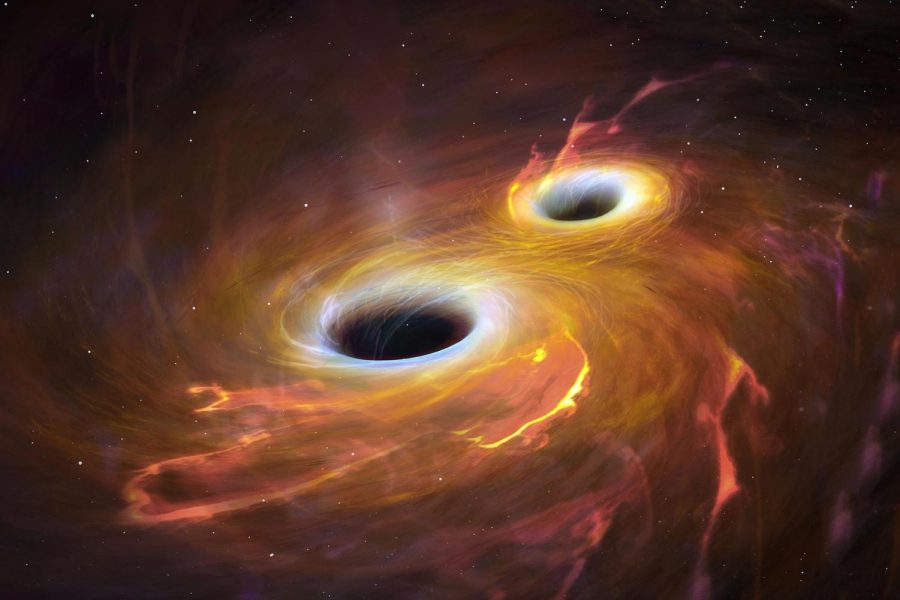Scientists predict that an expected massive black holes collision puts Earth at risk…10,000 years from now
The National Aeronautics and Space Administration (NASA) has discovered a supermassive black hole, nine billion light-years away which has a companion black hole orbiting closely around it. These supermasses circle each other every two years leading to scientists’ fears of an eventual collision.
Radio telescopes provide evidence that these black holes are more than 99 percent on their way to colliding. “The diameter of the binary’s orbit is 10 to 100 times smaller than the only other known supermassive binary,” scietechdaily.com explains. Scientists predict a collision in about 10,000 years. Even though that amount of time is hard to fathom, these two black holes began orbiting each other 100 million years ago.
Joseph Lazio and Michele Vallisneri at NASA’s Jet Propulsion Laboratory in Southern California elaborated to scietechdaily.com how the supermassive black holes behave in this binary system, “A blazar is a feeding supermassive black-hole (SMBH) in the heart of a distant galaxy that produces a high-energy jet viewed face-on from Earth.”
A blazar named PKS 2131-021 has gained attention as it can become a threat to Earth. “Located in the galaxy NGC 7727 in the constellation Aquarius, the supermassive black hole pair is about 89 million light-years away from Earth,” SciTechDaily shares.
This black hole is located nine billion light-years away from Earth. These two black holes are only 1,600 light-years between each other, setting a record for being the closest supermassive blazars.
Researchers at the California Institute of Technology in Pasadena have monitored the PKS 2131-021 blazar for the past 13 years via the Owen Valley Radio Observatory and have found a strange brightness in the blazar’s behavior.
Researchers have come to believe that the regular motions and patterns of the blazar are because of a second black hole tugging on the first one as they both orbit one another. Scientists have detected that “each of the two black holes in PKS 2131-021 is estimated to be a few hundred million times the mass of our Sun,” reports scietechdaily.com.
As far as dangers to humans, Olympic Heights astronomy teacher Mr. Lachlan MacKay explains that “black hole collisions, even far away, can give off very high energy and high levels of gamma rays that could penetrate the earth’s atmosphere and be dangerous to our skin tissue and bodies.” In addition, when supermassive objects collide they can send out gravitational waves that stretch and compress space itself.
MacKay further explains that “gravitational waves were first measured back in 2017 by two observatories in the United States when two supermassive black holes collided,” resulting in a stretching and compression of space, including the location of planet Earth.











